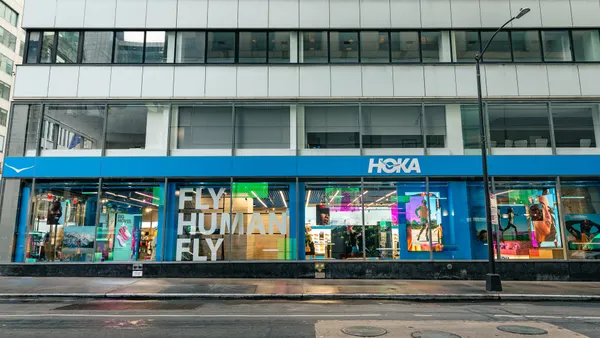Dive Brief:
- With much of its operations using renewable energy, Ikea is eyeing changes to its materials strategy as it works to further decrease its greenhouse gas emissions.
- The Swedish furniture giant said its emissions in FY 2022 fell 5% from the previous year and 12% from FY2016, putting the company in line with its 2030 goal of a 15% reduction against its 2016 baseline, according to its most recent climate report.
- The largest share of its climate footprint comes from the materials Ikea uses in its products. Materials-related emissions fell 1% YoY in 2022 but are up 11% from the company’s 2016 baseline.
Dive Insight:
Ikea opened its latest climate impact report with a sobering note: “The world has six years of carbon budget left to limit global temperature increase to 1.5 [degrees Celsius] compared to pre-industrial levels.”
Retail broadly is vastly behind in reducing emissions in the parts of the business responsible for the lion’s share — supply and value chains. Many have not even set goals for reductions in their supply chains as 2030 approaches or set a strategy on how to achieve those goals. A recent survey from Efficio found that among business leaders, only a third were “very confident” they can hit their climate goals.
For its part, Ikea has committed to becoming “climate positive” by 2030. That means reducing the company’s total climate footprint in line with standards necessary for a worldwide target of limiting global temperature increases to 1.5 degrees Celsius, and also contributing to further reductions externally, such as through its home solar program.
The company has made progress in its own operations and some of its suppliers with electricity use. Renewable energy’s share in Ikea’s retail and other operations rose to 64% in FY2022, up from 57% the prior year. Roughly a quarter of its retail markets are at 100% renewable energy.
The share of renewable energy in production also rose to 64% from 52% in FY2021, thanks in part to an Ikea program to help its suppliers purchase renewable energy.
With an initiative to use EV trucks, the company is also aiming for zero-emission transport for all home deliveries by 2025.
The materials filtering into Ikea’s products present perhaps the company’s largest climate challenge.
Metals make up the highest percentage of Ikea’s carbon footprint
Each material's environmental impact, as a percentage of CO2 tons
The company has a goal of using only recycled or renewable materials by FY2030, along with other initiatives like using bio-based wood glues, sourcing 100% recycled materials for some key materials, and setting goals for total renewable energy use by some materials’ suppliers.
Ikea has long faced heat from some environmentalists over its wood consumption and practices. The U.K.-based Earthsight has accused Ikea of sourcing wood cut illegally. In the 2010s, the company reportedly purchased tens of thousands of acres of forest in Romania, home to the largest tracts of virgin forest in Europe.
Just last year, the retailer was the subject of a lengthy investigative report from the New Republic linking Ikea to felled old-growth trees in Romanian forests.















